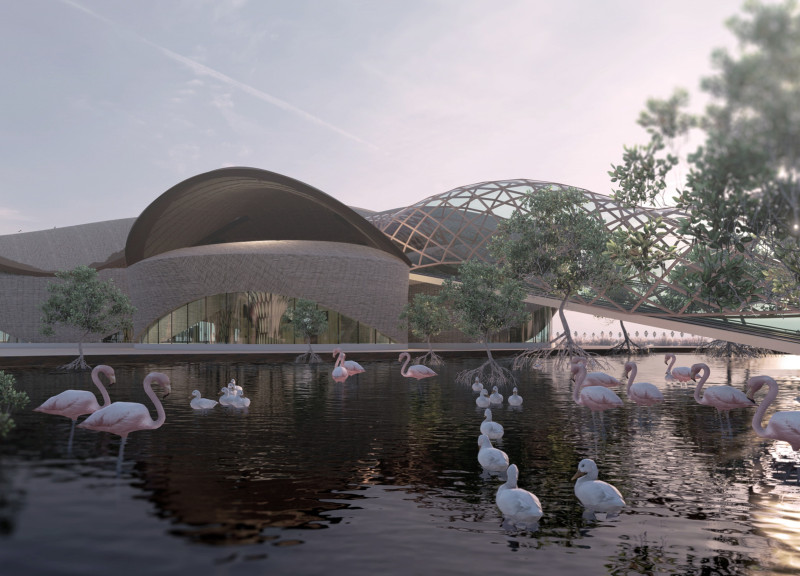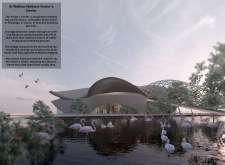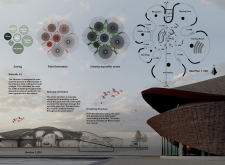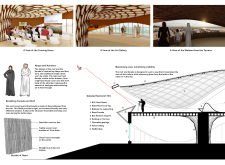5 key facts about this project
The Al Wathba Wetland Visitor’s Center is located in an ecological area known for supporting the Greater Flamingos. The center functions as a space for visitors to connect with the environment, highlighting the migratory journey of these birds as they search for food and breeding grounds. The design aims to create an engaging experience while ensuring respect for the surrounding wildlife.
Architectural Concept
The design reflects the path of the flamingos, featuring a bridge that spans an artificial Mangrove. This bridge serves as both a passageway and a symbol of the birds’ travels from their natural habitats to foraging sites. As people walk across the bridge, they engage with a landscape that mirrors the experience of the flamingos, fostering a deeper understanding of the ecological system.
Natural Climate Response
The building is designed to take advantage of natural light and airflow. The layout captures diffused sunlight, minimizing the need for artificial lighting during daytime hours. Additionally, it uses the prevailing northern winds for cooling. Operable glass fins help channel this air over the water, maintaining a comfortable interior temperature even on hot days.
Material Selection and Cultural Identity
Lightweight reed is used for the roofing and facade, connecting the structure to local ecological practices. This choice not only blends the building with its environment but also helps regulate temperature. The design is informed by cultural elements, drawing inspiration from traditional clothing, specifically the Abaya and Kandora. The roof and facade echo the soft, flowing lines of these garments, reinforcing the project’s connection to the local culture.
Wildlife Integration
The design carefully considers the balance between visitor experience and wildlife comfort. By ensuring that views from inside the building are maximized while obscuring visibility to the flamingos, it creates a respectful space for both people and birds. This approach allows for observation of wildlife without disrupting their natural behaviors, encouraging a sense of coexistence.
The roof’s form, inspired by traditional fabrics, creates interesting variations of light and shadow across the building’s surfaces throughout the day. This play of light enhances the visitor experience, making each moment unique.






















































